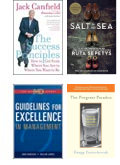Last month, I had the unique privilege of speaking with Mr. Bob Chapman – Chairman and CEO of Barry-Wehmiller Companies. Despite his many responsibilities (which include heading a global empire comprised of 12,000 employees), he devoted one half hour of his valuable time to discuss the philosophy of Barry-Wehmiller [a company where everyone is treated as “somebody’s precious child”]. A place in which workers are led (and not managed), and in which Everybody Matters. “Bosses” who would traditionally “manage” behave instead as beacons of transparency, encouragement, and support. Leadership at Barry-Wehmiller consists of individuals in “power” who lead cohorts who learn from one other, in a place where success is measured by “the way we touch lives of people.”
Transformational leaders are champions of grass roots participation. From a Barry-Wehmiller LEAN project management participant: “I can’t believe that the leader listened to me and championed my idea to the group, and now we’re going to implement it” (Chapman & Sisodia, 2015). It makes sense to solicit potential work improvements from the people who’ve been performing a job for years. But how often does that occur? Often, employees are served up managerial dictates (which may or may not fly) because no one asked the people in the trenches what their opinion was in the first place – and “management” didn’t stop to ask if what they conceived passed muster. The “outcome based” spillover from scientific management guru Frederick Taylor may breed resentment and fear – feelings that fuel productivity in the short term, but fail miserably in marshaling a cohesive, loyal, supercharged highly motivated workforce. When “managers” change from “command and control” to a servant-based model, discretionary effort is unleashed. Correspondingly, “ . . . servant-leaders have the humility, courage, and insight to admit that they can benefit from the expertise of others who have less power than them. They actively seek the ideas and unique contributions of the employees that they serve” (Cable, 2018).
Cable (2018) suggests that the result of “learning organizations” (as in a food delivery business where “managers” went from “carping” to both hearing and implementing employee concerns) can be unexpected, and phenomenally better than traditional management. And the results (in terms of employee contribution, managerial enlightenment, and a continuous cycle of innovation) provide learning opportunities for “bosses” who had formerly done nothing but nit-pick. A simple “How can I help you” is sometimes all that it takes. According to Jeff Bezos, a hallmark of a “truly intelligent” person is someone who is “constantly revising their understanding, reconsidering a problem they thought they’d already solved” (Stillman, 2018). Similarly, a Google top manager, Laszlo Bock, argued for “intellectual humility” in which the best “unleader” takes the reins. Those who can step back (and reassess their perspective) possess a quality sometimes more important than GPA, or even a superlative test score (Friedman, 2014). At Barry- Wehmiller, an item on their Leadership Checklist is “I recognize and celebrate the positive in others.” Team members can nominate their peers for recognition – in a system where even “non-winners” receive applause through a copy of what others said about them.
The “winner” gets to drive a vintage convertible for a week, a visible trophy they can show off to both family and friends. Not having access to a vintage/custom vehicle myself, I devised an alternative recognition for my students – a t-shirt, with the class custom logo emblazoned on the back. Each week, they vote on who best exemplifies class “Guiding Principles” (which they devised themselves!). The winner also receives recognition on my web page – to include their picture, bio, and what their peers said about them – so that they can share their distinction through social media.
I am appreciative that Bob Chapman shared his insight, and provided a template for other companies to follow. I am grateful for his guidance, lessons learned, and hard knocks wisdom that he shared from years of trial and error implementation.
And I am delighted that someone of his caliber reached out in response to a letter.
Thank you, Mr. Chapman.
______________________________________________________________________________________
References
Cable, D. (2018, April 23). This is how humble leadership really works. Retrieved from https://hbr.org/2018/04/how-humble-leadership-really-works?referral=03759&cm_vc=rr_item_page.bottom
Friedman, T. L. (2014, February 23). How to get a job at Google. The New York Times. Retrieved from https://www.nytimes.com/2014/02/23/opinion/sunday/friedman-how-to-get-a-job-at-google.html
Stillman, J. (2018, September 25). This is the Number 1 sign of high intelligence, according to Jeff Bezos. Retrieved from https://www.inc.com/jessica-stillman/this-is-number-1-sign-of-high-intelligence-according-to-jeff-bezos.html
Taylor, B. (2018, November 22). Making kindness a core tenet of your company. Retrieved from https://hbr.org/2018/11/making-kindness-a-core-tenet-of-your-company. Taylor mentions Mercedes Benz, that allows employees to drive one of their cars for two days (e.g., employee excursions are typically timed with major life events, such as a birthday party or the birth of a child).





Recent Comments